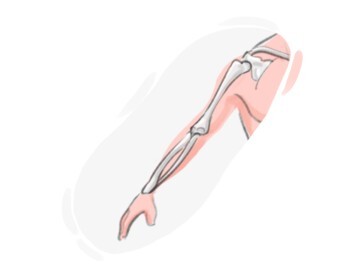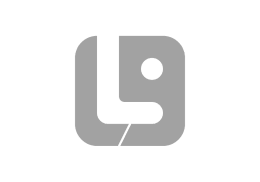Körper - Das Muskel-Skelett-System
Hier lernen Sie einige englische Wörter im Zusammenhang mit dem muskuloskelettalen System, wie "Band", "Hamstring" und "Steißbein".
Überprüfen
Lernkarten
Rechtschreibung
Quiz

any of the hard pieces making up the skeleton in humans and some animals

Knochen
a place in the body where two bones meet, enabling one of them to bend or move around

Gelenk
an elastic tissue that supports or connects joints in an infant and turns into skeleton during growth

Knorpel, Knorpelgewebe
a transformed cartilaginous structure that has undergone ossification

Knorpelknochen, aus Knorpel entstandener Knochen
(anatomy) a strong band of tissue which connects two bones or cartilages or keeps organs in place

Band, Ligament
a fluid-filled sac that reduces friction between tissues such as bones, tendons, and muscles

Bursa, Schleimbeutel
the central part of the skeleton that includes the skull, vertebral column, and ribcage

Achsenskelett, Rumpfskelett
a single muscle that is located along the central axis of the body, including the head, neck, and trunk

axiale Muskulatur, Muskel entlang der zentralen Achse des Körpers
a tendon in the leg that attaches the muscles of the calf to the bone of the heel

Achillessehne, Fersensehne
(anatomy) an elastic cord or band that connects a muscle to a bone

Sehne, elastisches Band
the bony structure that surrounds and provides protection for a person's or animal's brain

Schädel
a piece of body tissue that is made tight or relaxed when we want to move a particular part of our body

Muskel
(anatomy) one of the five tendons at the back of someone's knee

Hamstring, Oberschenkelmuskelsehne
(anatomy) a muscle that moves a part of the body away from its normal position by contraction

Abduktor, Abduktormuskel
a line of connected bones going down from your neck to tail bone in the middle of the back

Rückgrat
the large muscle at the front of the upper part of the arm, which flexes the forearm

Bizeps
a long flat bone at the center of the chest that connects the ribs and the shoulder girdle

Brustbein, Sternum
the bone that is just below the eye

Wangenknochen, Jochbein
(anatomy) the structure that encloses the inner surface of the eye which consists of the muscle which makes the eye move

Ziliarkörper, Ziliarmuskel
the long, curved bone that connects the shoulder blade to the sternum

Schlüsselbein, Klavikula
either of the pair of bones that go across the top of the chest from the base of the neck to the shoulders

Schlüsselbein
(anatomy) the bone structure that surrounds and protects the brain

Schädel, Kranium
(anatomy) a large muscle, triangular in shape that covers the shoulder joint and helps the arm to abduct and rotate

Deltamuskel, Deltoideus
a muscle that helps a body part or limb be stretched out by contraction

Strecker, Streckmuskel
(anatomy) the longest bone in the top part of the human leg between the hip and the knee

Oberschenkelknochen
(anatomy) a long bone in the arm that extends from the shoulder to the elbow

Oberarmknochen, Armknochen
(anatomy) the outer and narrower of the two bones between the ankle and the knee

Wadenbein, Fibula
(anatomy) a muscle that allows one to bend a limb or body part by contraction

Beuger, Beugemuskel
either of the bones that form the jaw, particularly the lower jaw

Kieferknochen, Unterkiefer
(anatomy) (zoology) either half of the jawbone, especially the lower jawbone that helps a vertebrate open and close its mouth

Unterkiefer, Mandibel
(anatomy) any of the five bones of the foot between the ankle and the toes

Mittelfußknochen, Metatarsale
(biology) the overall arrangement or the system of muscles in a human or an animal's body

Muskulatur, Muskelsystem
(anatomy) the trapezoidal bone that is at the base and lower back of the cranium, though which the spinal cord passes

Hinterhauptbein, Occipitalknochen
the singular bone located at the front of the skull, forming the forehead and upper eye sockets for structural support and protection

Stirnbein, Frontalknochen
a cranial bone that forms the sides and roof of the skull, offering protection for the brain

Scheitelbein, Parietalknochen
a butterfly-shaped bone, contributing to its structure and housing important structures

Keilbein, Schmetterlingsförmiger Knochen
a cranial bone located on the sides and base of the skull, housing the ear structures and contributing to jaw movement

Schläfenbein, Temporalknochen
a facial bone that forms the prominence of the cheek and connects various other facial bones

Jochbein, Zygoma
a facial bone that contributes to the structure of the cheek and forms part of the eye socket

Jochbein, Wangenzahn
a facial bone that forms the central part of the face, supporting the upper teeth

Oberkieferknochen
(anatomy) a small bone triangular in shape that covers and protects the front part of the knee joint

Kniescheibe, Patella
(anatomy) the large round bone structure that the limbs and the spine are joined to, which also protects the abdominal organs

Becken, Pelvis
(anatomy) any of the four large muscles at the front of the thigh that allow the knee joint to stretch

Quadrizeps
a muscle at the front of the thigh that helps the knee joint stretch

Quadrizeps, Oberschenkelmuskel
the outer and slightly shorter of the two bones of the human forearm
each of the curved bones surrounding the chest to protect the organs inside

Rippe
(anatomy) the bony structure in the chest formed by the ribs which protects organs in the thoracic cavity

Brustkorb, Thorax
(anatomy) a large bone at the lower part of the spinal column between the two hip bones of the pelvis

Kreuzbein, Os sacrum
the inner and larger bone of the pair of bones between the ankle and the knee

Schienbein, Beinknochen
(anatomy) each of the pair of triangular bones that connect the humerus to the clavicle

Schulterblatt, Skapula
each of the pair of triangular bones that connect the upper arm bone with the collar bone

Schulterblatt, Skapula
an elastic cord or band that connects a muscle to a bone

Sehne, Band
the structure of bones supporting the body of an animal or a person

Skelett
the row of small bones that are joined together down the center of the back of the body

Wirbelsäule
(anatomy) a ring of muscle that can open or close an opening, such as anus, in the body

Sphinkter, Schließmuskel
(anatomy) a long flat bone at the center of the chest that connects the ribs to the shoulder girdle

Brustbein, Sternum
the small triangular bone at the end of the spinal column in humans or tailless primates

Steißbein, Kokzyx
(anatomy) any of the cluster of seven small bones in the foot between the ankle and upper foot

Tarsal, Fußwurzelknochen
the longest bone in the human skeleton which is between the hip and the knee

Oberschenkelknochen, Femur
(anatomy) the inner and larger of the two bones between the ankle and the knee

Schienbein
(anatomy) the three-headed muscle of the arm that functions as the extensor of the elbow joint

Trizeps, dreiköpfiger Armmuskel
(anatomy) the thinner and longer bone of the human forearm extending from the elbow to the wrist

Ulna, Elle
(anatomy) any of the bony segments and cartilages of the spinal column

Wirbel, Wirbelsäulensegment
a small bone found in the middle ear that helps transmit sound vibrations and facilitate hearing

Gehörknöchelchen, kleiner Knochen im Mittelohr

















